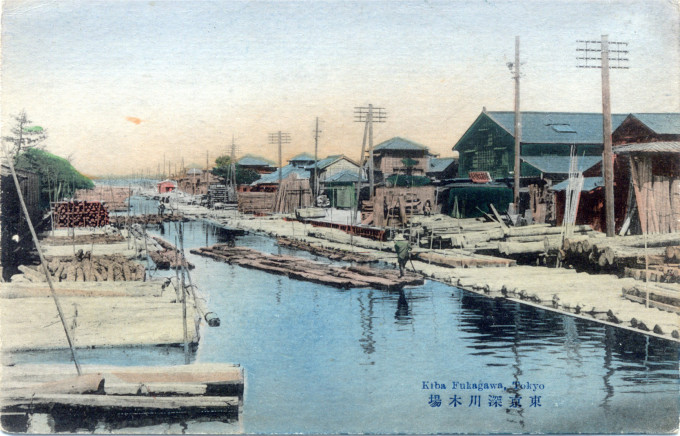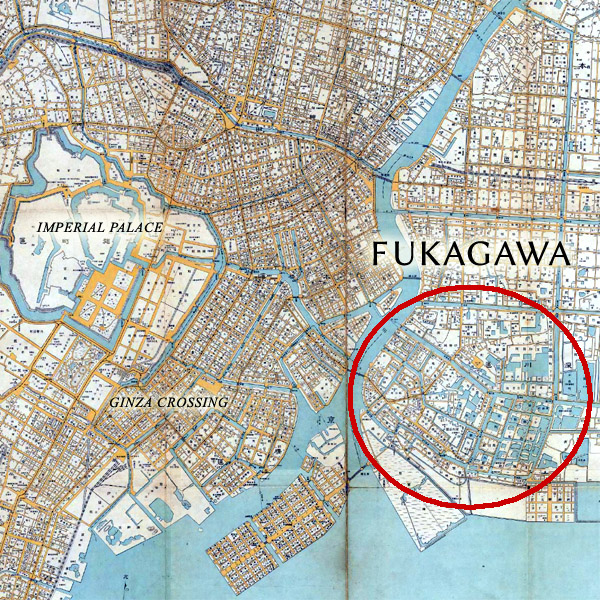“Fukagawa is a maze of narrow streets, chiefly inhabited by the lower trading and artisan classes, and offers little for the sightseer.
“The district, situated between the temple of Hachiman and that of Susaki-no-Benten, is noted for its trade in lumber, the town here being intersected bu numerous canals communicating with the river, down which come the timber-laden rafts from the inland provinces.”
– A Handbook for Travellers in Japan, Including the Whole Empire from Yezo to Formosa, Basil Hall Chamberlain & W. B. Mason, 1901
“Like most wards in the east shitamachi [low city] of Tokyo, Fukagawa is not a place where wealth is overly evident, but neither is want. While by no means a sleepy hollow, it has none of the pent-up-ness of the central business districts, or the brittle proud-of-itself chic of the city’s shopping meccas only a few stops west.
“Fukagawa, which means ‘deep river’, was reclaimed from the sea beginning in the 1600’s, shortly after the establishment of Edo (now Tokyo), and it soon became a large merchant district of the feudal capital.
“Born from water, Fukagawa was comprised almost entirely of an extensive canal system lined with wharves and white plastered warehouses from which merchants supplied the region with its oil, rice, beans, sake and salt. Most famous was the area of Fukagawa known as Kiba, ‘Place of Wood’. The Fukagawa lumberyards provided much of the huge supply of lumber needed by the world’s largest wooden city, were of great economic importance.
“In early Edo, lumber was kept closer to the center of town. However, in the wake of a fire in 1641 that destroyed not only houses but the lumber needed to rebuild them as well, the government ordered the yards removed to the Fukagawa district.”




Pingback: Brochure | geishaology